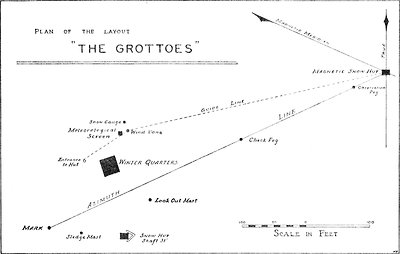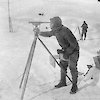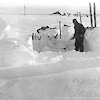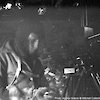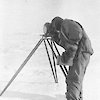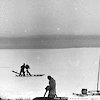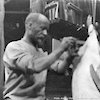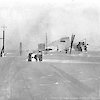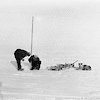The magnetician’s trials
In their own words
On April 16 Kennedy had a term day [days set apart for detailed magnetic observations]. A fresh breeze was blowing and the temperature was −20 degrees F Some of his observations had to be taken in the open and the remainder in a tent. The series took three hours to complete and by that time he was thoroughly chilled through, his feet and fingers were frost-bitten and his language had grown more incisive than usual.
— Wild in Home of the Blizzard
Kennedy’s main task was to observe and record the magnetic field in the vicinity of the Hut. For this purpose he needed to be well away from the Hut, whose iron content would corrupt the readings.
He set up a tent about 120 metres away to the northeast, from which he got a series of observations during one of his ‘term days’, which were the first and 16th day of each month. Then the wind blew his tent apart, forcing him to devise new accommodation.
With no tent and limited resources for a more substantial structure, Kennedy turned to the most abundant local resource: ice. The return of the Southern sledging party provided the help he needed to build an igloo from blocks of compressed snow.
As autumn passed and winter came on, he struggled to maintain his program of regular observations. He found it hard to get help, which was hardly surprising since it involved spending long hours in an unheated igloo through the coldest hours of the night. But he persisted for long enough to obtain a unique set of magnetic records.
And whilst Kennedy undertook magnetics work Harrisson caught fish and penguins, and prepared specimens. Moyes, Watson and Hoadley were involved in meteorological and snow measurements.

